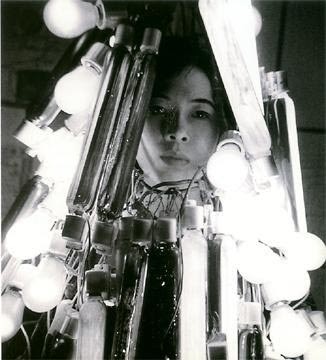COLLECTIONS
The National Museum of Modern Art (Tokyo) / The Ashiya City Museum of Art & History / Museum of Contemporary Art (Tokyo) / Hyogo Prefectural Museum of Art (Hyogo, Japan), etc.



田中敦子自1955年加入具体美术协会,翌年在《舞台上的具体艺术》中发表〈电气服〉一作,由无数上了珐琅颜料的灯泡及灯管组成,独树一格,从此获高度瞩目。受具体美术的激进思想的影响,田中的作品体现了一种实验和创新的精神。田中在她的职业生涯中探索了各种媒介,包括绘画、雕塑、装置和行为艺术。她以对非物质材料的实验工作而闻名,比如光、声音和时间,这在1950年代中期为她赢得了很多关注。田中使用珐琅彩创造了迷人的圆圈和线条。光滑的质感和鲜艳的色彩使得作品呈现相当出众,美术评论家米歇尔· 塔皮耶对她有相当高的评价,获国际赞誉为与白发一雄、元永定正并列早期具体派代表艺术家之一。
COLLECTIONS
The National Museum of Modern Art (Tokyo) / The Ashiya City Museum of Art & History / Museum of Contemporary Art (Tokyo) / Hyogo Prefectural Museum of Art (Hyogo, Japan), etc.
通过电子邮件接收最新展览信息和会员独家活动!
提交邮箱地址后,我们将发送确认邮件。请查收并点击邮件内链接完成注册流程。